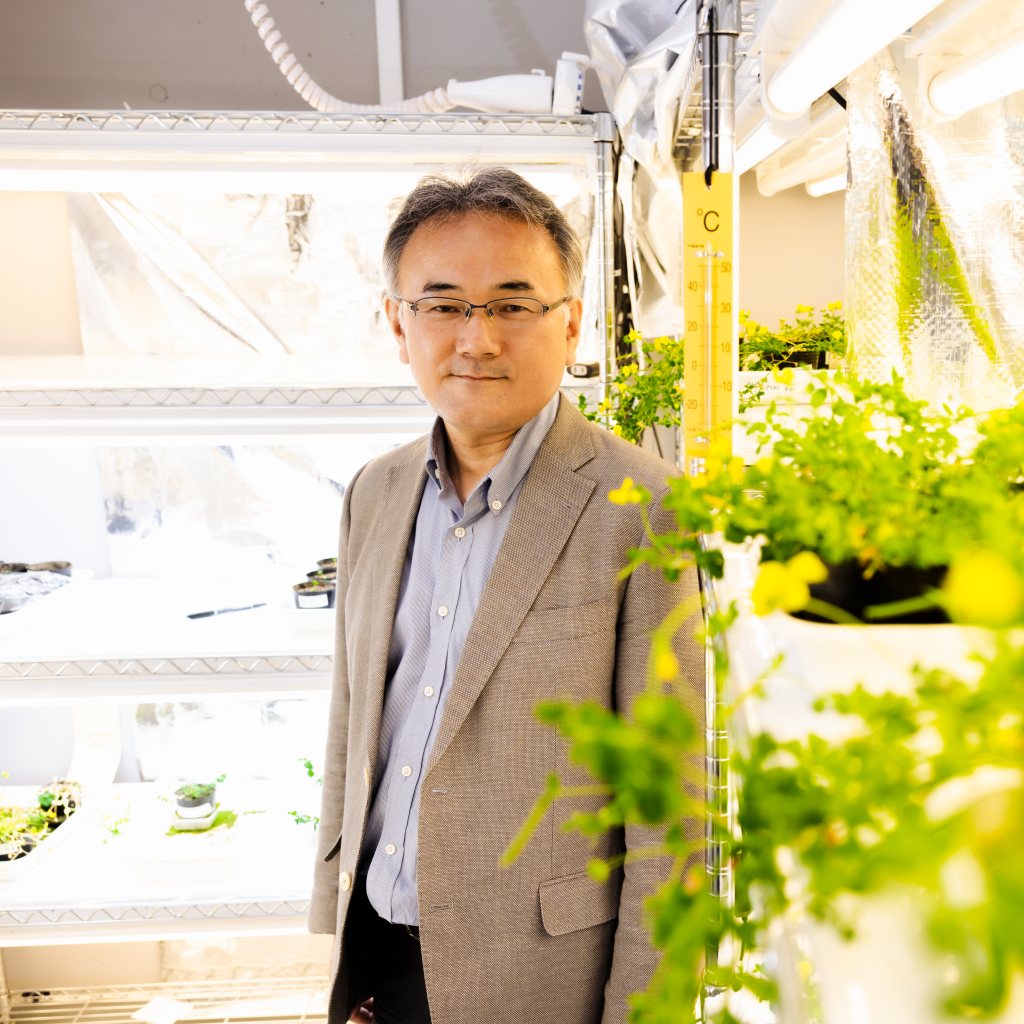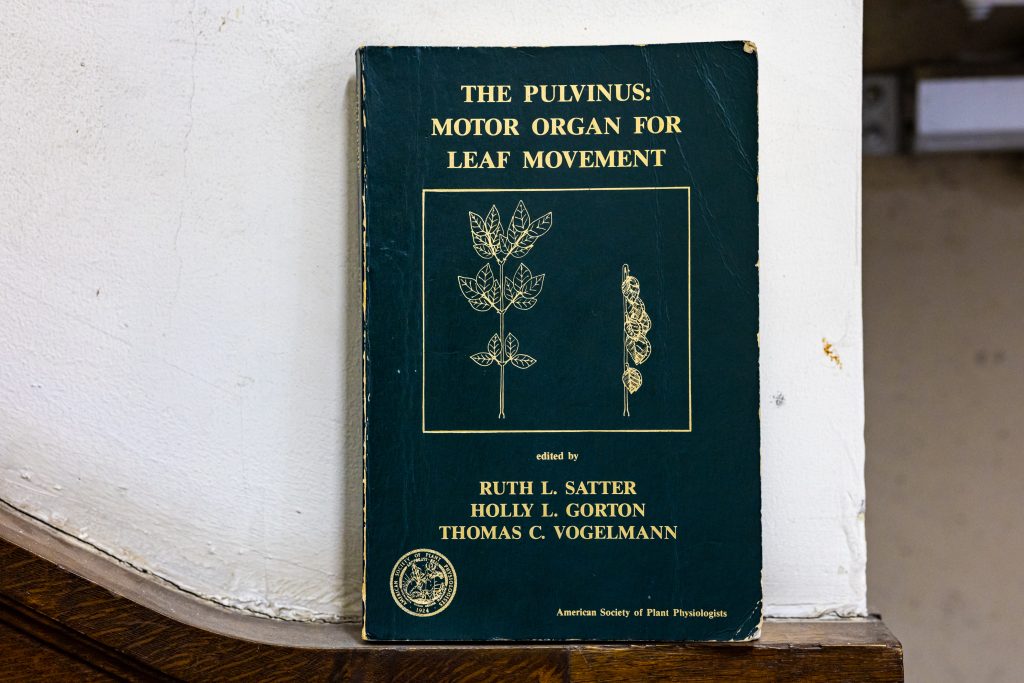
Faculty of Science and Technology Professor Nobuyuki Kanzawa studies the nastic movement seen in leaves of legumes like mimosa plants. He discusses his future aspirations in research related to food and environmental problems, as well as the field of bone regeneration he is also involved with.
Mimosa leaves close when they are touched—this interesting and unique movement is referred to as the “nastic movement” of plants. Flowers that open and close in response to temperature or sunlight are an example of this nastic movement.
The nastic movement of mimosa plants is caused by changes in turgor pressure in the pulvinus at the leaflet’s base. When a leaf is stimulated, the structure comprised of actin protein in the cells of the lower side of the pulvinus supporting the leaflet crumbles, while water in the lower side of the pulvinus cells moves to the upper side. This causes shrinking in cells that had contained water, which causes the leaves to close. This is the general mechanism of the nastic movement.
Actin also plays a role in the opening and closing movement of guard cells at the surface of plant leaves, and the underlying mechanism is almost identical to that of the nastic movement of mimosa plants. The pulvinus and guard cells are actually derived from the same cells, which I believe diverged into different functions over the course of evolution. If this is the case, a better understanding of the underlying pulvinus mechanism may mean we can control plant pores in the future, and perhaps create more drought-resistant plants.
An understanding of the leaf closing mechanism may help bring agricultural and environmental improvements

When it comes to movements in plants, the nastic movement of leaves is just one of the characteristics of legumes—varieties other than mimosa also close their leaves on hot days and at night. Plants close their leaves up as a means of controlling transpiration and to achieve more efficient photosynthesis. Understanding the mechanism that causes plant leaves to move in this way may lead to discoveries that can boost production of legumes.
Greater legume production efficiency will not only be advantageous to agriculture, but will also have a positive effect from an environmental angle. Legumes have the ability of fixing nitrogen from the atmosphere, and releasing it back into the soil, allowing plants to consume it. Rotating crops by planting legumes has been a long-established practice that helps to reduce the amount of nitrogen-based fertilizer needed before planting different crops. I am confident that legumes will be an essential plant around the world in so many ways.
Focusing on two fields of research: plants and bone regeneration
I am actually channeling my efforts into another field of research—finding out how a material called Apatite Fiber Scaffold might be useful as a bone substitute.
Apatite Fiber Scaffold has a structure resembling household scrubbers made from sponge gourd. When comparing cells cultivated in a two-dimensional layout in a petri dish, and cells grown in a three-dimensional scaffolding, using Apatite Fiber Scaffold, the latter cells exhibit superior functions, but we are still not completely sure of the reasoning behind this. My goal at this stage is to identify if this three-dimensional scaffold hastens the development of these functions, and to try to explain how those functions are superior. If the fruits of this research can be applied to the development of medical devices that grow bone substitutes, it may be useful in the future for the treatment of knee pain, broken bones and osteoporosis.
The thing I enjoy most about my research may actually be when a theory ends up failing. Discovering what lies beyond my own capabilities, or spending time letting my imagination go wild, are what drives me. There may not be many researchers involved in fields of study that differ so wildly like my fields—I never want to give up my efforts in either field, and I feel that I want to keep pressing on because there is no one else doing the same thing. I plan to keep a finger in each of these pies for the foreseeable future.
The book I recommend
“The Pulvinus: Motor Organ For Leaf Movement”
by Ruth L. Satter et al, American Society of Plant Physiologists

Pulvinus is the English term for the base of a plant leaf, and this book sparked my first foray into plants, despite my initial research efforts focusing on the muscles of invertebrates. As someone involved in research of mimosa plants, one day I hope to make a discovery that surpasses the content of this book.
-
Nobuyuki Kanzawa
- Professor
Department of Materials and Life Sciences
Faculty of Science and Technology
- Professor
-
Graduated from the Department of Biology, Faculty of Science, Chiba University, and received his M.S. and Ph.D at the university’s Graduate School of Science and Technology. Held positions as research associate at the Faculty of Science and Technology at Sophia University, then associate professor, and his current role from 2014.
- Department of Materials and Life Sciences
Interviewed: May 2022